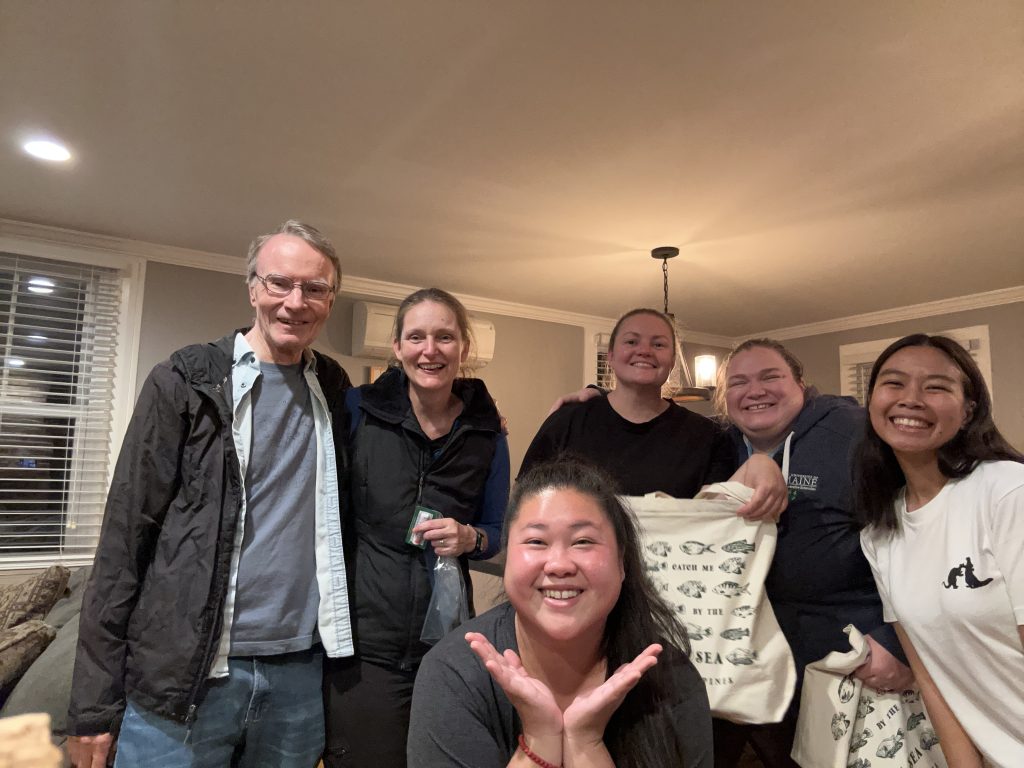
Anna Celis: Bridging science halfway across the world

“Dear Anna, Congratulations! On behalf of the U.S. Department of State’s Bureau of Education and Cultural Affairs…” were the first words I read with half-asleep eyes, from the email sent at 2 in the morning, Philippine time. The Young Southeast Asian Leadership Program was a program revered by my peers; competition was high, especially for my country. This program allowed us to visit the United States, funded by the U.S. government, to experience how work is being done there.
Eight months later, I traded my coastal work—small-scale fishers in small outrigger boats, coral reefs teeming with parrotfish, and waters with a pleasant temperature of 22 degrees Celsius—for another kind of coastal work: small-scale fishers in relatively larger and mechanized boats, freezing cold waters teeming with lobsters and cod, and waters with temperatures I’m certain I would turn into an ice cube if I got in.
Growing up in an archipelagic country, the sea connects us and has deeply tied us since childhood. From a very young age, I wanted to become a marine biologist—mostly because it sounded cool. Elementary passed, then high school, then when the time to decide for college came, I found myself still sticking to the same aspirations. I took my undergraduate degree in biology, with the plans of taking a master’s degree in marine biology after I graduate. As I took my course and learned about small-scale fishers, marine protected areas, and marine conservation, I realized that I wanted to include the human dimension in my work. After all, they are part of the environment and will always play an important role in the marine environment, especially in the Philippines, where our population are predominantly coastal communities. So instead of marine biology, I took environmental science for my master’s degree, and this paved the way into the work that I do now, which checks all of the work I wanted to do: research with the objective to provide management actions that will be implemented at the grassroots.

After three years of this work, I found myself accepted into this 5-week program, hosted by the Center for Cooperative Aquaculture Research in Maine. Generously hosted by Melissa and Scarlett, we spent the next three weeks in different spaces of the University of Maine: the Orono campus, CCAR, and the Darling Marine Center. We trotted around, visiting working laboratories, talking to seasoned professors, and working on aquaculture laboratories at CCAR. I learned about marine science research in congruence with fisheries, and in return, I got to share my work in the Philippines.
So, what do marine science and fisheries research have in common in two different oceans? A lot, surprisingly. Most interestingly, how accessibility of blue foods falls short in communities that play an essential role in production. In the Philippines, our rural communities who fish for a living still find it difficult to access fish, as most of their catch is being exported to heavily touristic areas. Maine, as I have discovered, holds the same dilemma of exportation and not having local accessibility to seafood.
While small-scale fishers on the surface look very different in the Philippines compared to the ones there are in Maine, they still hold the same essence I highly respect: independent people choosing every day to go out to the sea to make their living. As I leave the United States and fly halfway back across the world, I hope for the same thing to happen to our small-scale fishers as what I’ve experienced in Maine: empowered, informed, and capacitated.

